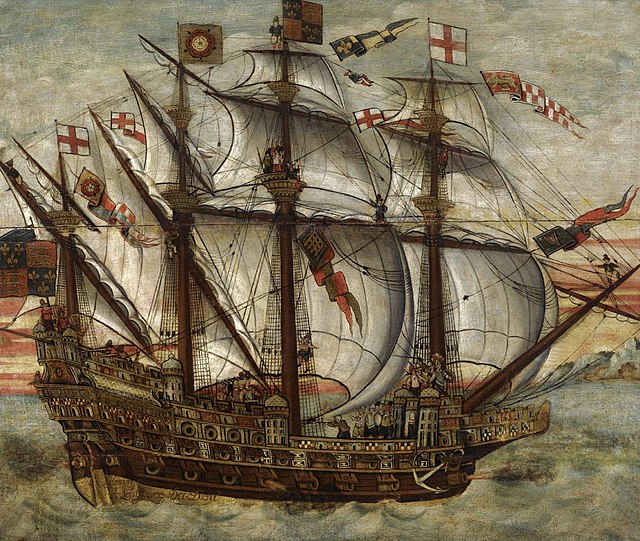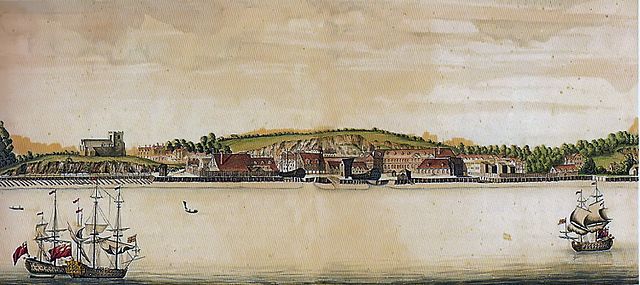Admiral Sir William Edmonstone, 4th Baronet CB, DL, also 14th of Duntreath, was a British naval commander, courtier and Conservative politician.
"Chorus". Caricature by Spy published in Vanity Fair in 1879
Ainslie Place, Edinburgh
Woolwich Dockyard was an English naval dockyard along the river Thames at Woolwich in north-west Kent, where many ships were built from the early 16th century until the late 19th century. William Camden called it 'the Mother Dock of all England'. By virtue of the size and quantity of vessels built there, Woolwich Dockyard is described as having been 'among the most important shipyards of seventeenth-century Europe'. During the Age of Sail, the yard continued to be used for shipbuilding and repair work more or less consistently; in the 1830s a specialist factory within the dockyard oversaw the introduction of steam power for ships of the Royal Navy. At its largest extent it filled a 56-acre site north of Woolwich Church Street, between Warspite Road and New Ferry Approach; 19th-century naval vessels were fast outgrowing the yard, however, and it eventually closed in 1869. The former dockyard area is now partly residential, partly industrial, with remnants of its historic past having been restored.

Clock House (Dockyard offices, 1783–1784), the earliest surviving building on the Woolwich Dockyard site)
Woolwich Dockyard (Nicholas Pocock, 1790, National Maritime Museum). The surviving Clock House (then newly built) is seen centre-right, and the Parish Church far left. Left to right along the shoreline: three shipbuilding slips (two of which survive, much rebuilt, at Mast Quay), two dry docks (which also survive, much rebuilt) and a further slip (since filled in). Behind the latter stands the large Sail and Mould Loft of 1740, with the Great Storehouse to its right and the Officers' Terrace (houses with gardens) to the right of that; all these were demolished in the early 20th century. Everything west (right) of the Clock House was newly acquired land in 1790; the painting shows planned buildings, including a long ropehouse that was never in fact built.
The Great Harry, launched at Woolwich in 1514.
Woolwich Dockyard in 1698: the recently erected Great Storehouse (centre-right) dominates the built environment of the dockyard.






